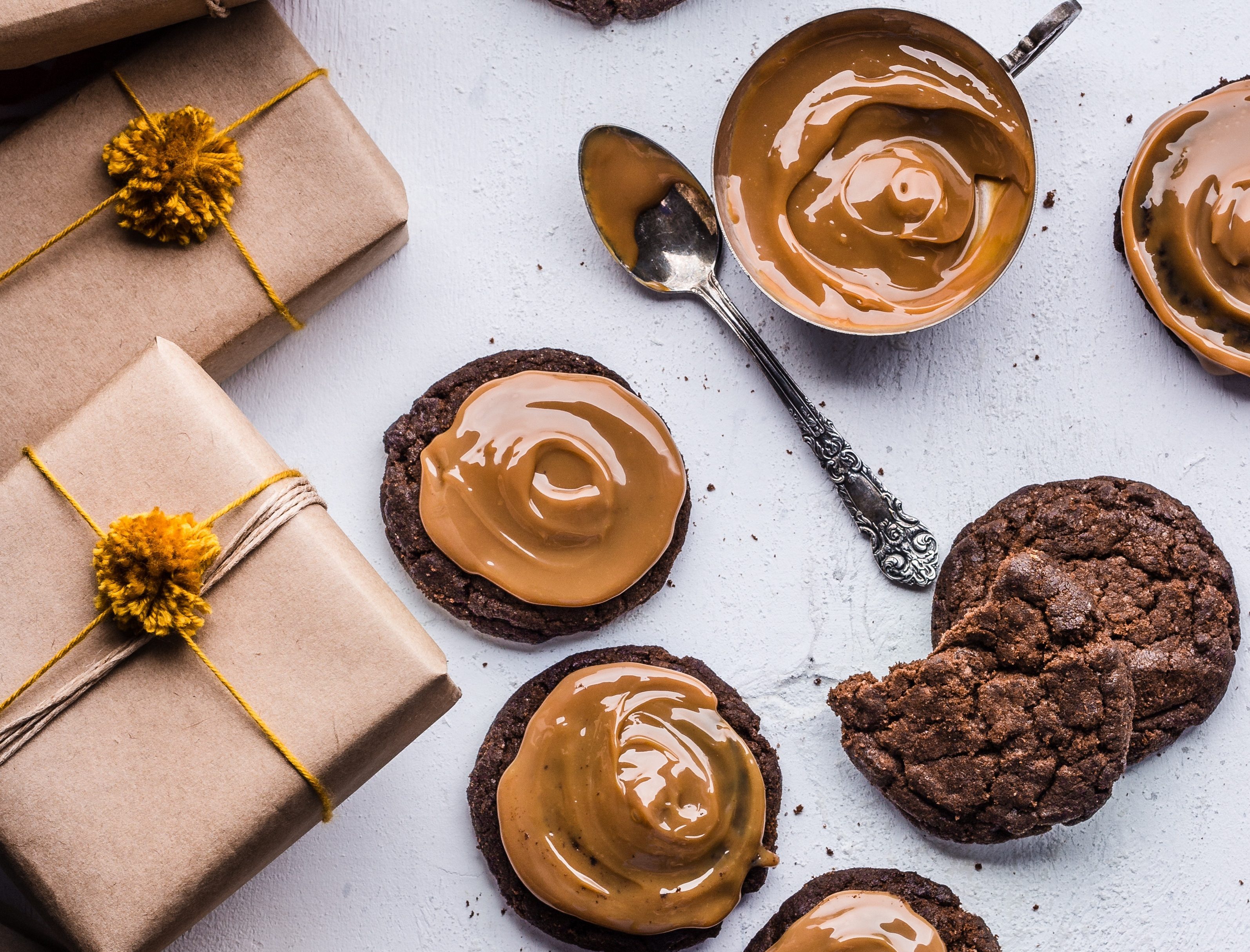Easy Salted Caramel

Salted caramel in our eyes is the definition of indulgence. Eat it by the spoon for extra warmth and comfort, or use it in cakes, cupcakes, chocolates, biscuits, ice cream, can make frosting with it, pour it over a boring store-bought dessert, anything you want really!
Salted caramel requires patience. The fleur de sel helps break up the sweetness, adding the extra velvetiness your palate deserves.
Ingredients:
- 280g caster/granulated sugar (either is fine)
- 85g water
- 170g double cream
- 1 tsp vanilla extract
- 1/2 tsp fleur de sel
Method:
- In a saucepan, add the water and sugar and give it a quick stir. Place over medium heat.
- Add the vanilla extract to the double cream and whisk gently.
- Keep an eye on the saucepan, the sugar will start to dissolve, and the mixture will thicken. At this point do not stir the pot.
- Give it a little swirl, look out for a deep amber colour. You will notice the smell, heat to approx 175-190 degrees Celsius.
- Once it reaches dark amber, remove from the heat and steadily pour the double cream in, gentle, steady stream (don't pour it all in) make sure you have a wooden spoon as you will need to stir as you add in. It will get very bubbly and steamy so do be careful.
- Stir until it stops bubbling, and the steam has lessened.
- Add a heaped half a teaspoon of fleur de sel, stir to combine.
- Allow the caramel to cool down as its very hot. Once cooled, store in a glass jar and pop in the fridge.
Why should I use Fleur de Sel and not regular table salt?
Fleur de Sel is less refined salt, larger proportions of minerals and moisture. By definition, fleur de sel is the most complex in flavour. It is also considered (perhaps to no one's surprise) to be among the saltier of salts, thanks to trace calcium and magnesium chlorides. These compounds absorb moisture, thereby pre-dissolving the minerals in the salt and delivering flavour immediately to the taste buds. It is a variety of sea salt.
Evaporation also dictates the harvesting of kosher and table salt, but the process is different. One significant nuance is source: while fleur de sel comes from the sea, table and kosher salt are derived from inland salt deposits, a relic of ancient seabeds. To extract regular salt, water is injected into mines to dissolve the minerals; the resulting brine is heated to evaporate the water, and as the various minerals precipitate, the sodium chloride is isolated. Bam—table salt.
Popular substitutes for Fleur de Sel:
Maldon salt: "flake salt," so-called because of its flat shape rather than compact, granular shape. Its crunch and distinct, salty punch resemble that of fleur de sel, but the flavour won't linger in your mouth since Maldon salt is low in moisture. It's also best used as a finishing salt.
Sea salt: want to stick with unrefined sea salt? You'll find many varieties in most supermarkets for less than half the price of fleur de sel. Sea salt most closely matches the texture and composition of fleur de sel: both are crunchy, deliver strong flavour in small concentrations, and contain trace minerals (that's where their unrefined nature comes in).
If you decide to go down this route, you don't have to change the measurements: half a teaspoon of fleur de sel can be replaced with the same amount of Maldon salt. The flavours and quality will differ, but the salty punch and crunch will remain.

Salted caramel cupcakes
